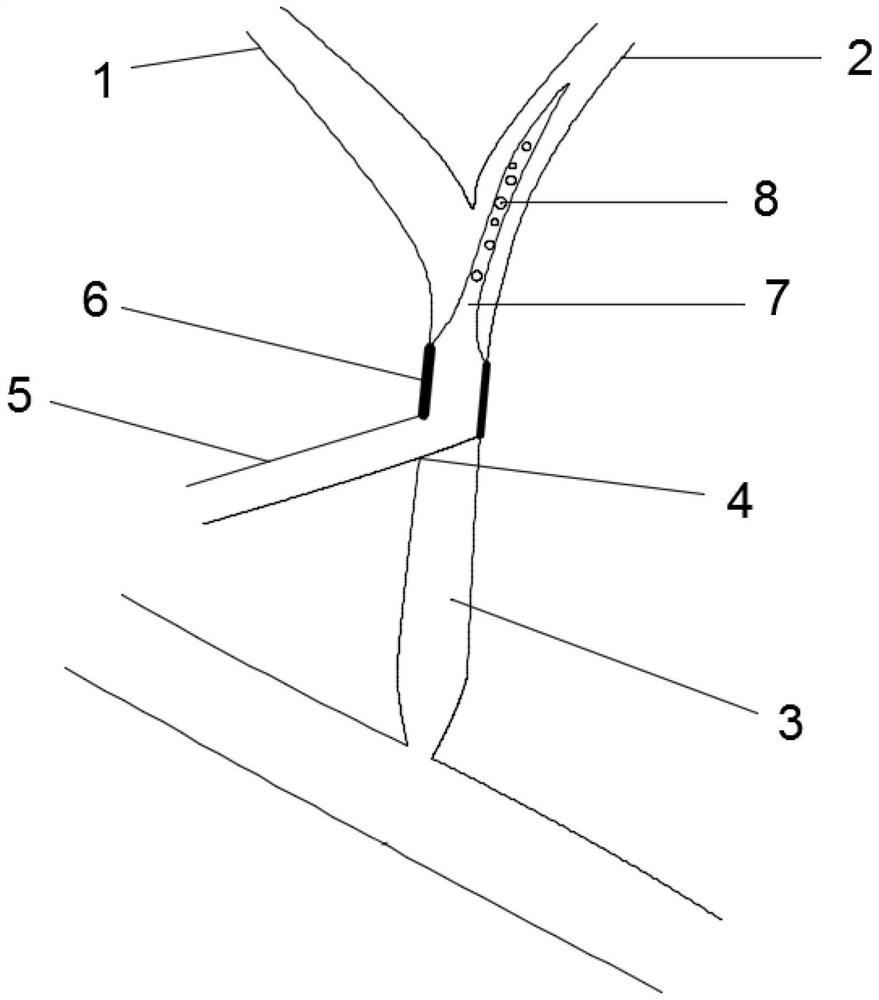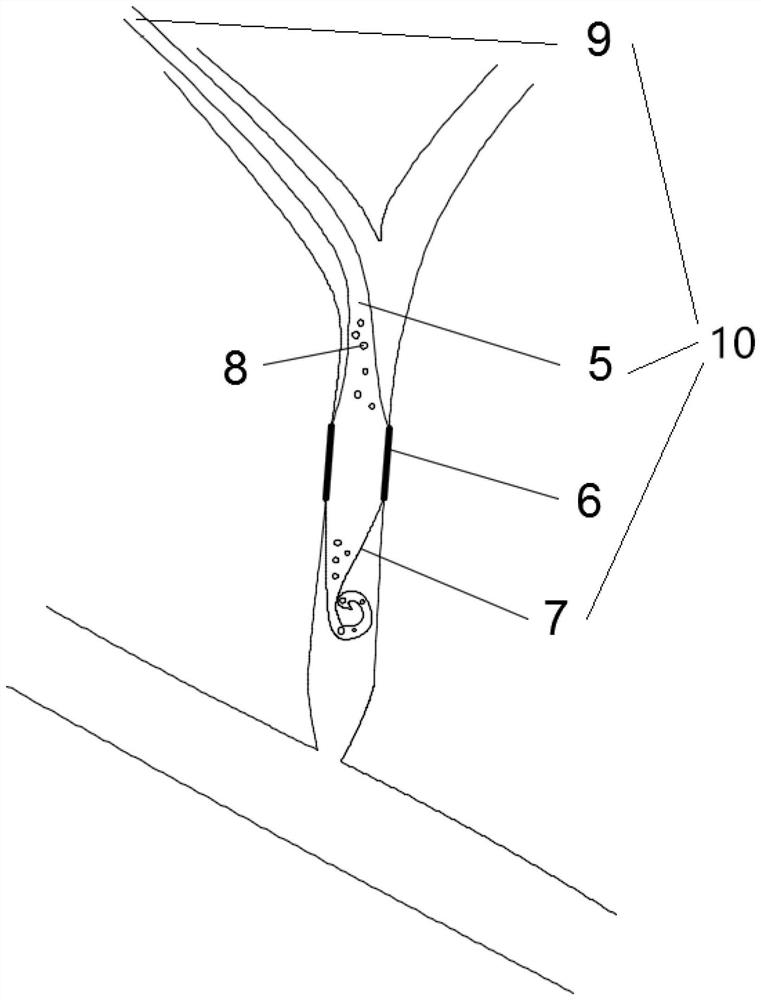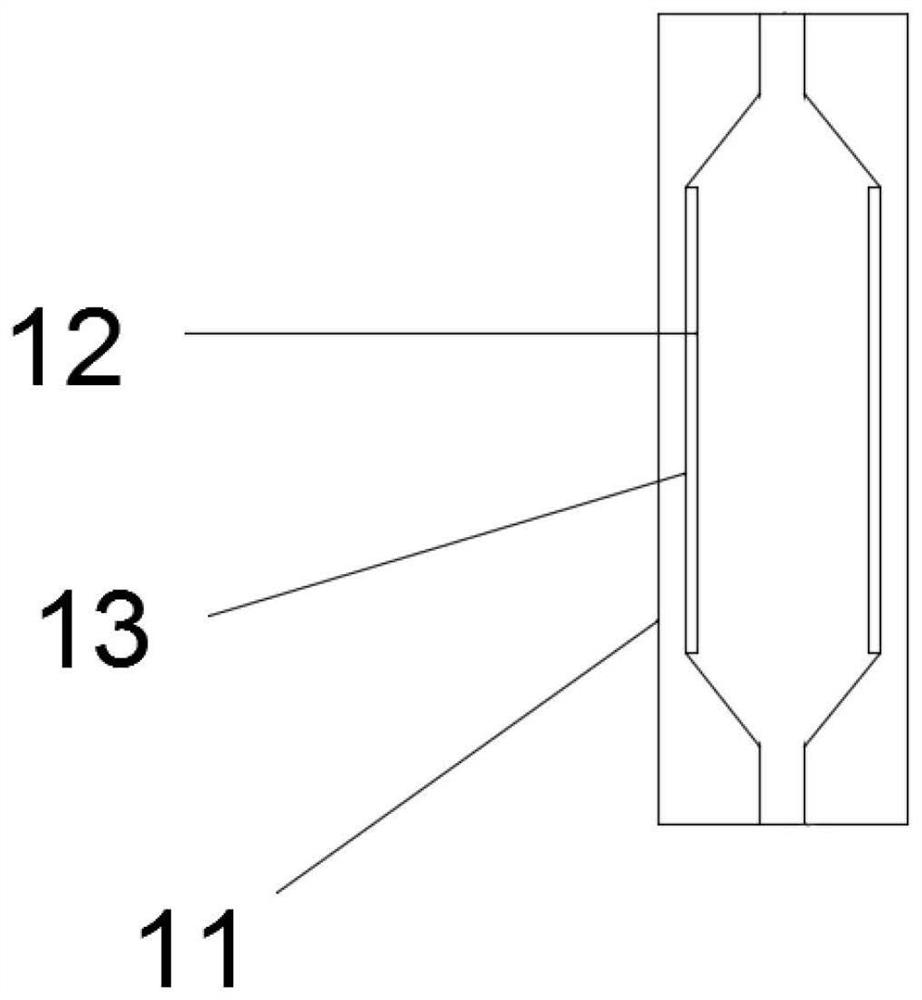Recyclable biliary tract drainage tube coated stent
A technology of covered stents and drainage tubes, applied in the field of medical supplies, can solve the problems of easy recurrence, easy blockage of plastic stents, displacement, metal stent stimulation, etc.
- Summary
- Abstract
- Description
- Claims
- Application Information
AI Technical Summary
Problems solved by technology
Method used
Image
Examples
Embodiment 1
[0041] Example 1: Such as figure 1 As shown, it is a schematic diagram of puncture and drainage in the body. During the operation, the drainage tube 10 is extended into the common bile duct 3 through the surgical incision 4, the posterior drainage tube 7 is inserted into the left hepatic duct 2 along the common bile duct 3, and the stent graft 6 Place it at the bile duct leakage point or bile duct stenosis, and then slowly withdraw the cannula 11 outwards. As the cannula 11 is withdrawn, the internal stent 12 will automatically expand. Self-expandable stents or cones can be used for intracorporeal puncture A self-expanding stent. The stent 12 stretches the covering film 13 and the stretched covering film 13 is tightly attached to the inner wall of the common bile duct 3. The covering film 13 directly blocks the leakage of the bile duct, and the stent 12 directly expands the narrowed bile duct. After that, the drainage work can be performed through the drainage hole 8, and at the...
Embodiment 2
[0043] Example 2: Such as figure 2 As shown, it is a schematic diagram of extracorporeal puncture and drainage. During the operation, the drainage tube 10 is extended into the liver along the incision outside the body, and the posterior drainage tube 7 is inserted into the common bile duct 3 along the right hepatic duct 1. The posterior drainage tube used for external puncture 7 is a coiled tube body, the length of the crimped posterior drainage tube 7 is 4cm, and the length of the common bile duct 3 is 8-12cm, which effectively avoids the problem of drainage failure caused by the posterior drainage tube 7 passing through the common bile duct 3 into the duodenum. The irritation of the drainage tube 10 to the intestine is also avoided. When the stent graft 6 enters the leak point of the bile duct or the narrow part of the bile duct, the cannula 11 is slowly withdrawn. As the cannula 11 is withdrawn, the stent 12 will cover the membrane 13 Expanded, the membrane 13 will fit with ...
PUM
| Property | Measurement | Unit |
|---|---|---|
| Length | aaaaa | aaaaa |
| Length | aaaaa | aaaaa |
| Diameter | aaaaa | aaaaa |
Abstract
Description
Claims
Application Information
 Login to View More
Login to View More - R&D
- Intellectual Property
- Life Sciences
- Materials
- Tech Scout
- Unparalleled Data Quality
- Higher Quality Content
- 60% Fewer Hallucinations
Browse by: Latest US Patents, China's latest patents, Technical Efficacy Thesaurus, Application Domain, Technology Topic, Popular Technical Reports.
© 2025 PatSnap. All rights reserved.Legal|Privacy policy|Modern Slavery Act Transparency Statement|Sitemap|About US| Contact US: help@patsnap.com



